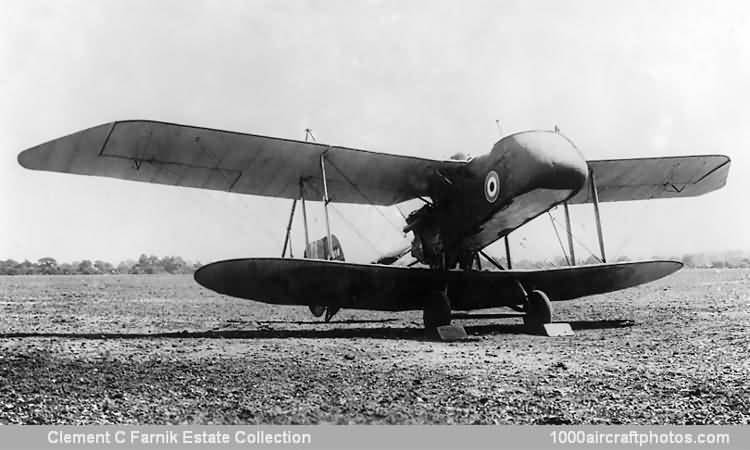02/28/2010. Remarks by Johan Visschedijk: "Conceived as a replacement for the F.E.2b in the fighter-reconnaissance role, the F.E.9 was of similar pusher configuration and therefore already obsolescent by the time it appeared in 1917. Emphasis was placed in the design upon providing the gunner with a good field of fire and the pilot a good all-round view. To this end, the nacelle was located close beneath the upper wing and was carried on struts above the shorter-span lower wing.
The large overhang of the upper wing brought the F.E.9 almost into the sesquiplane category, and called for bracing wires from triangular kingposts above the interplane struts of the single-bay cellule. A cruciform tail unit was carried on four slender booms, as on the F.E.2, and the V-strutted landing gear incorporated oleo legs. Construction was largely of wood, but pairs of steel tube N-struts linked the nacelle to the upper and lower wings.
Power was provided by a 200 hp Hispano-Suiza eight-cylinder liquid-cooled V-engine and the planned armament comprised two 0.303 in (7.7 mm) Lewis guns on pillar mounts, ahead of and behind the front cockpit, and both fired by the observer, the latter rearwards over the pilot's head and the top wing. Installation of a third gun, on the side of the fuselage for use by the pilot, was planned.
Authority was given by the War Office for construction of three prototypes (s/n A4818 to A4820) and a production batch of 24 (s/n A4821 to A4844) in October 1916, and testing began in April 1917. Handling and performance of the prototypes were disappointing, however, and production was cancelled after five had been completed, to allow the Hispano engines to be used in more worth-while types.
Testing of the prototypes continued, in the course of which two-bay wings were tried on the second aircraft, which was also flown for a time by No. 78 Home Defence Squadron, RFC."
